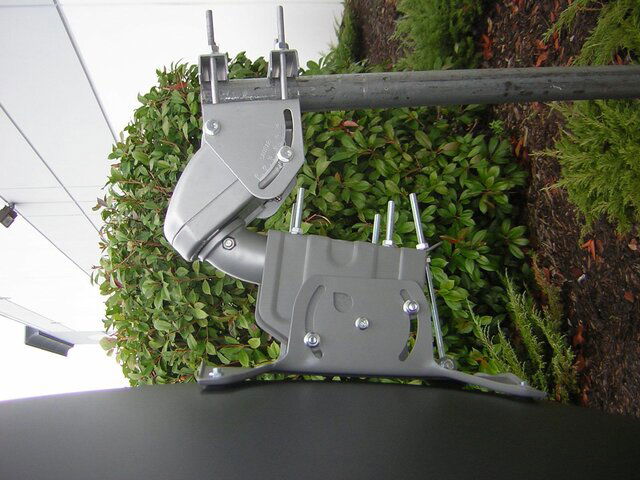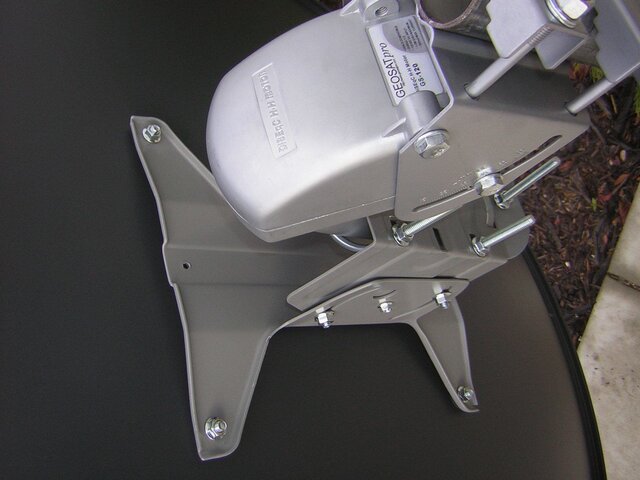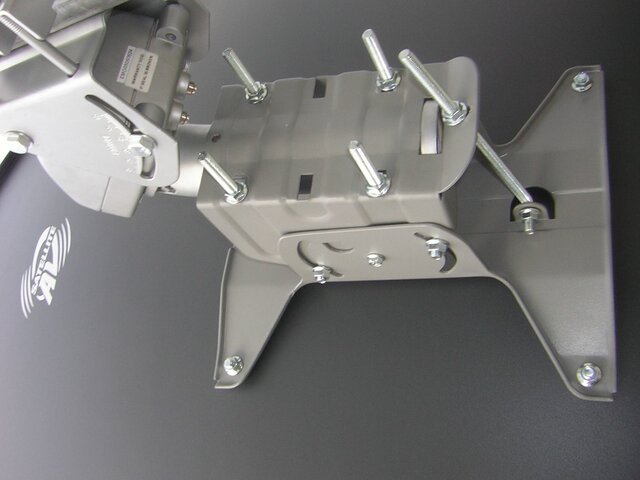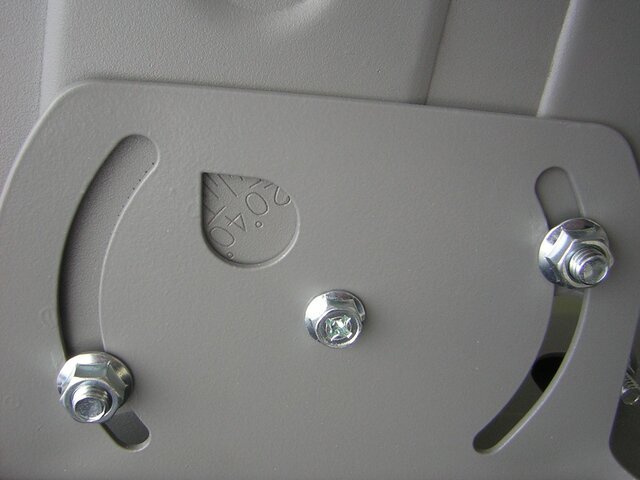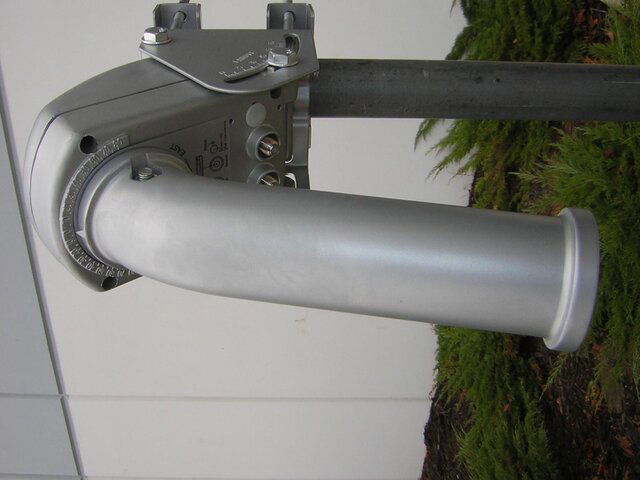I recently received GeosatPro's 1.2 meter solid dish, purchased from SatelliteAV.
This is my informal review.
The package arrived in a *large*, *heavy* box. It was exceptionally well-packaged, and took the better part of half-an-hour to remove everything from the box. I was pleased at the level of protection around the reflector.
Assembly was straightforward, and all parts were present. The mounting bracket is impressively sturdy, as advertised. The reflector feels more rigid than my 90 cm Fortec Star dish's. (It probably has to be, given the larger diameter.)
Overall, it feels like a sturdy, high quality dish. No wonder shipping was so expensive (almost the same as the dish's cost.)
Signal levels are exceptional vs. 90 cm dish. So it appears to work. See below for some examples.
See below for some examples.
I particularly like the two side-mounted support arms, to supplement the central LNB arm. This should support the heftiest of LNBs with no difficulty.
I have one major gripe, however. The 40 mm LNB holder could definitely be better. Specifically, the two side arms bolt to the LNB holder, and when attached, the LNB will NOT rotate. So for a fixed installation, if you want to repoint to a different satellite with a different skew, you'll have to remove the LNB holder and both side arms, unscrew the screw holding the two plastic pieces together, rotate the LNB, retighten the LNB screw, and take the side support arms and re-attach the LNB holder to the LNB arm and side arms again.
It's not the end of the world, but it's an annoyance in such an otherwise A+ design. Of course, with a motorized setup, or a true single-satellite application, this would not be an issue since you'd set the skew once and forget.
Signal quality on a few transponders on G25 on a FortecStar Mercury II (which reads significantly lower than any other box I've tried) and VisionSat IV200:
Readings are signal quality:
11789/V MII: 61-66% IV200: 87-87%
11819/H MII: 71-82% IV200: 92-94%
11966/H MII: 56-65% IV200: 87-87%
12090/H MII: 31-39% IV200: 87-87%
I have no explanation why the IV200 seems to like 87% so much. But at any rate, these are by far the highest Mercury II readings I've ever gotten on G25, so I think the dish is working.
But at any rate, these are by far the highest Mercury II readings I've ever gotten on G25, so I think the dish is working.
LNB is 0.4 dB NF GeosatPro bullet Universal. I had one extra lying around. Presumably a quieter LNB would do even a bit better.
This is my informal review.
The package arrived in a *large*, *heavy* box. It was exceptionally well-packaged, and took the better part of half-an-hour to remove everything from the box. I was pleased at the level of protection around the reflector.
Assembly was straightforward, and all parts were present. The mounting bracket is impressively sturdy, as advertised. The reflector feels more rigid than my 90 cm Fortec Star dish's. (It probably has to be, given the larger diameter.)
Overall, it feels like a sturdy, high quality dish. No wonder shipping was so expensive (almost the same as the dish's cost.)
Signal levels are exceptional vs. 90 cm dish. So it appears to work.
I particularly like the two side-mounted support arms, to supplement the central LNB arm. This should support the heftiest of LNBs with no difficulty.
I have one major gripe, however. The 40 mm LNB holder could definitely be better. Specifically, the two side arms bolt to the LNB holder, and when attached, the LNB will NOT rotate. So for a fixed installation, if you want to repoint to a different satellite with a different skew, you'll have to remove the LNB holder and both side arms, unscrew the screw holding the two plastic pieces together, rotate the LNB, retighten the LNB screw, and take the side support arms and re-attach the LNB holder to the LNB arm and side arms again.
It's not the end of the world, but it's an annoyance in such an otherwise A+ design. Of course, with a motorized setup, or a true single-satellite application, this would not be an issue since you'd set the skew once and forget.
Signal quality on a few transponders on G25 on a FortecStar Mercury II (which reads significantly lower than any other box I've tried) and VisionSat IV200:
Readings are signal quality:
11789/V MII: 61-66% IV200: 87-87%
11819/H MII: 71-82% IV200: 92-94%
11966/H MII: 56-65% IV200: 87-87%
12090/H MII: 31-39% IV200: 87-87%
I have no explanation why the IV200 seems to like 87% so much.
LNB is 0.4 dB NF GeosatPro bullet Universal. I had one extra lying around. Presumably a quieter LNB would do even a bit better.


